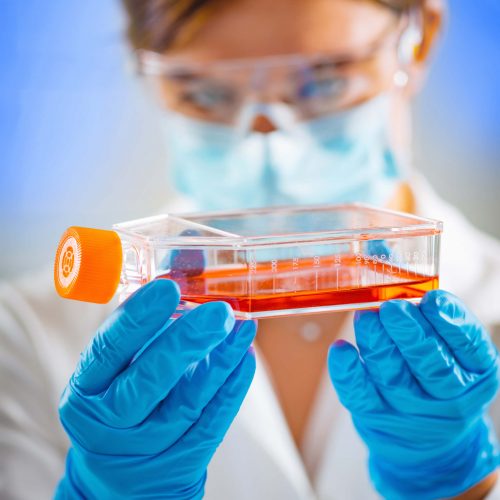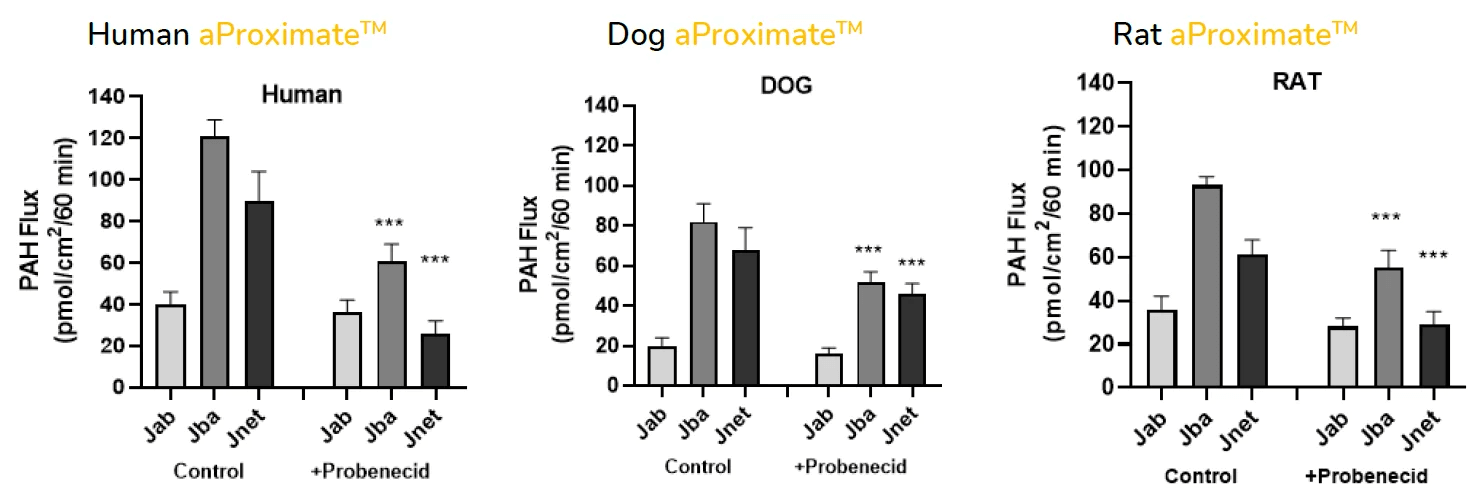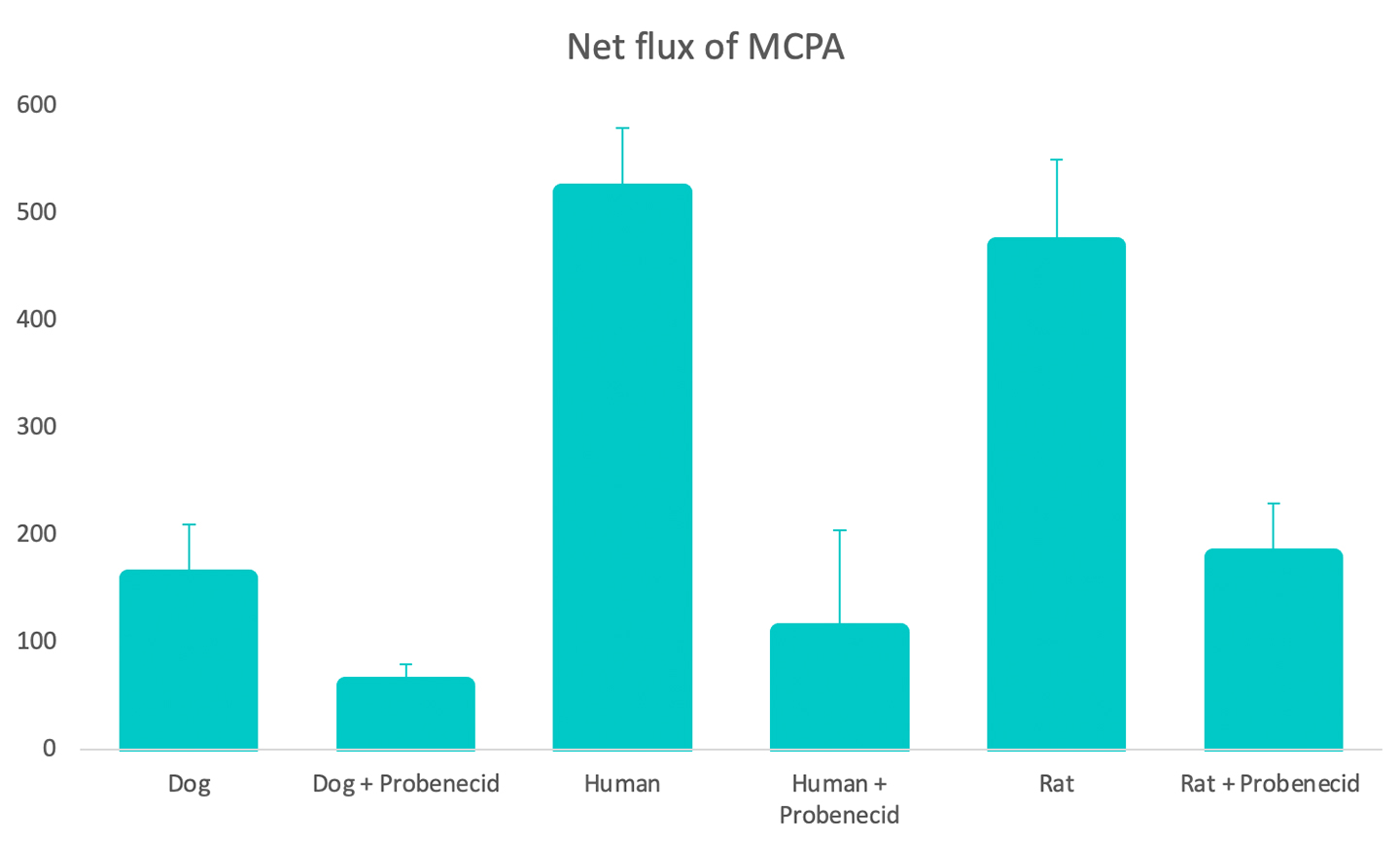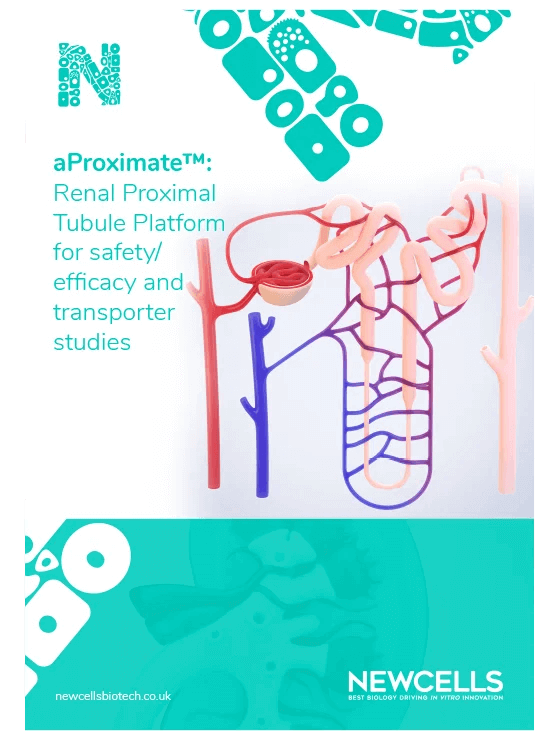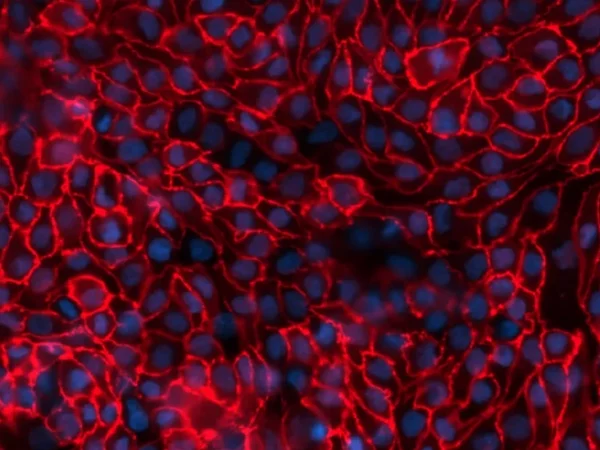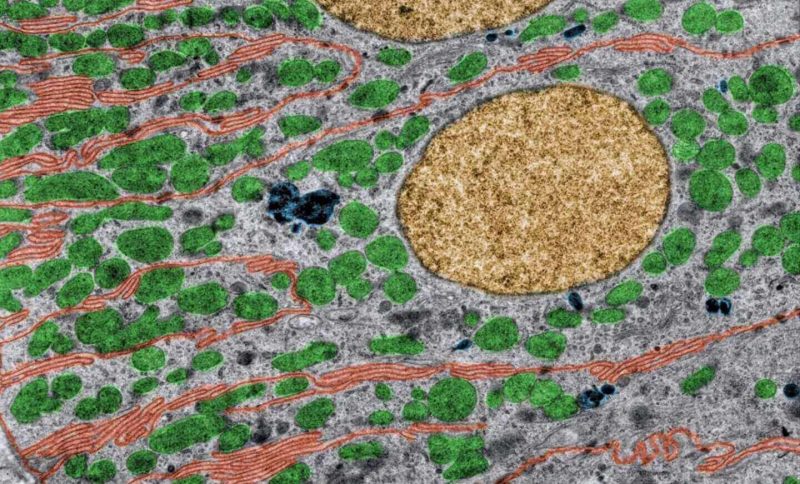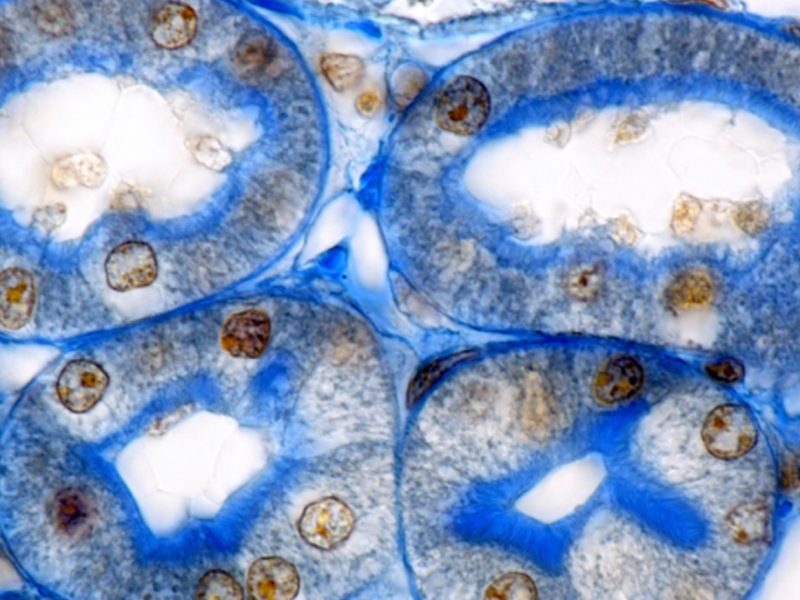Our service provides insights into cross-species differences in drug handling: aProximate™ is available in multiple species such as human, rat, dog and NHP, making it the ideal kidney transporter model for assessment of cross-species comparison of drug handling.
Perform rapid in vitro species comparison to select the best preclinical species and progress lead compounds into clinical development by using our transporter assays.
The cross-species comparative data generated from our transporter assays have been used for IND and IMPD submissions as it provides detailed mechanistic insights into drug excretion in several species, explaining possible differences.
Our project timelines are short due to our regular supply of fresh kidney tissue. The robust data generated by our scientific experts will guide you in confidence for key decision-making steps during drug development.
An example of cross-species drug interaction packages includes assessment of transepithelial flux in proximal tubule cells, specifically Apical to Basal (Jab) and Basal to Apical (Jba) flux, as well as net transport measurements in rat, dog and human. We can also measure the magnitude of intracellular accumulation across both the apical and basolateral membranes. We recommend acquiring data from three separate biological donor kidneys across all species.
| Assay design |
|
|
|
|
| Models |
aProximate™ primary isolated kidney proximal tubule cells |
|
|
|
| Assay format |
24-well Transwell® plates (transporter assays) |
|
|
|
| 96-well Transwell® plates (kidney toxicity assays) |
|
|
|
| Species |
Human |
|
|
|
| Mouse |
|
|
|
| Rat |
|
|
|
| Dog |
|
|
|
| Assay readout |
Apical to Basal (Jab) and Basal to Apical (Jba) flux |
|
|
|
| Net transport measurements |
|
|
|
| Measurement of intracellular drug and metabolite concentrations |
|
|
|
| Kidney toxicity assays |
|
|
|
| Time points and replicates |
0, 30, 60, 90, 120 minutes (flux) |
|
|
|
| 72 hours (toxicity assays) |
|
|
|
| Data points are usually performed in triplicates |
|
|
|
